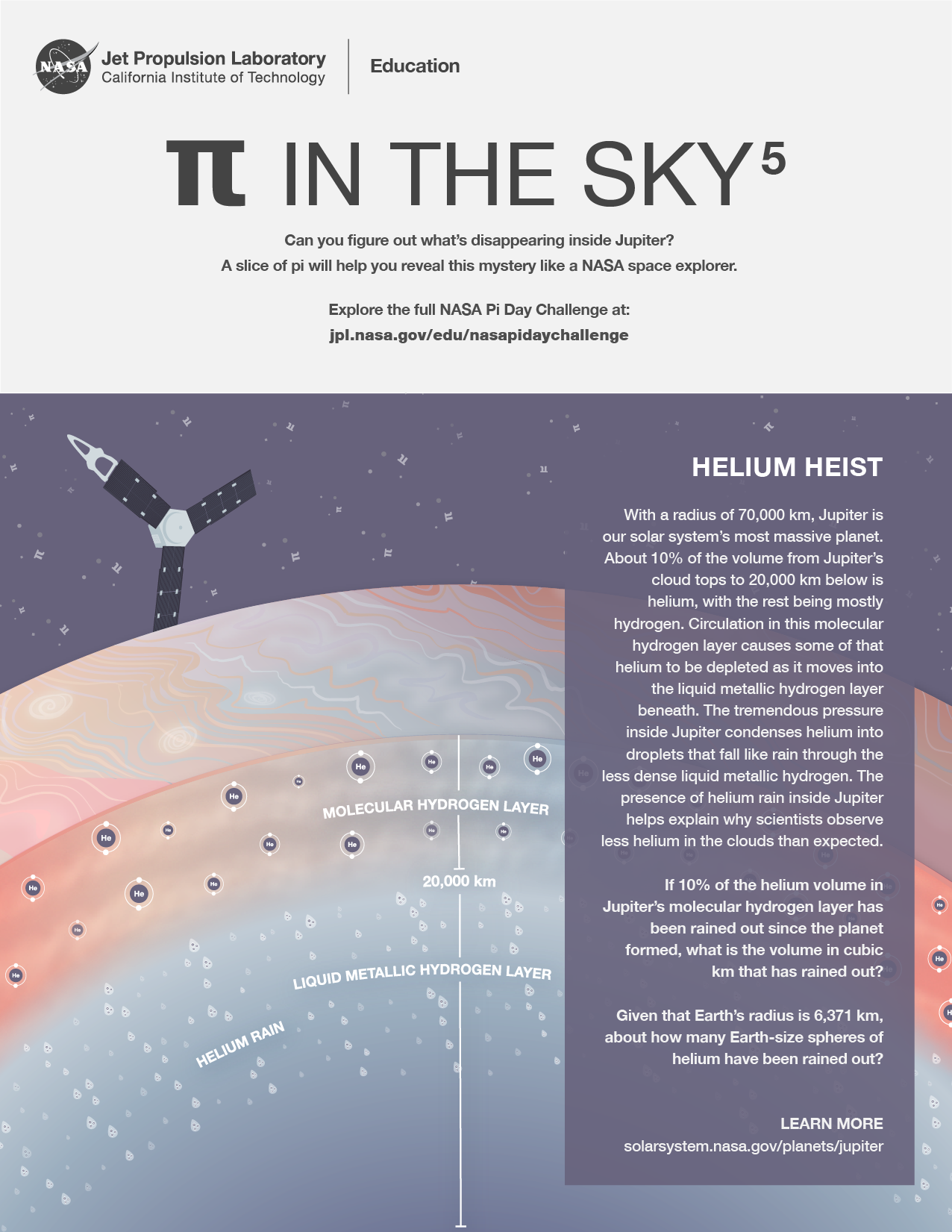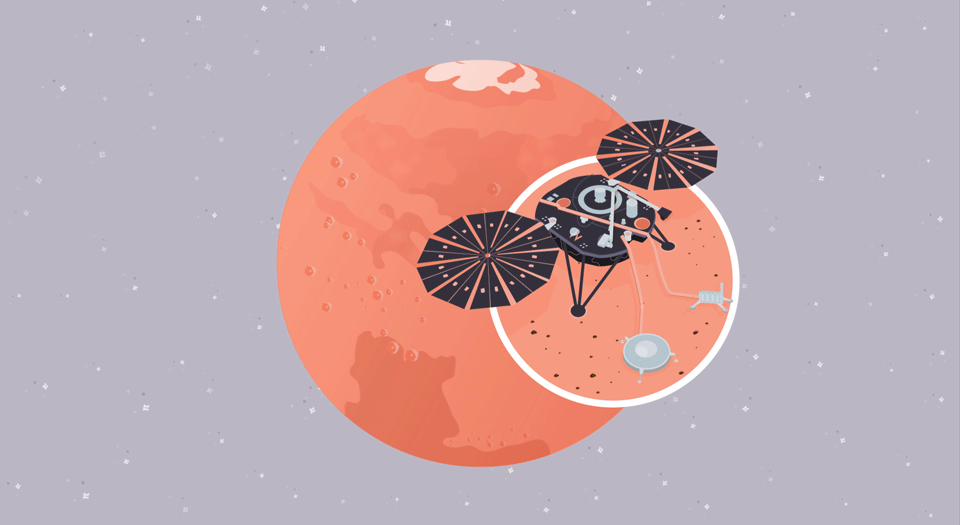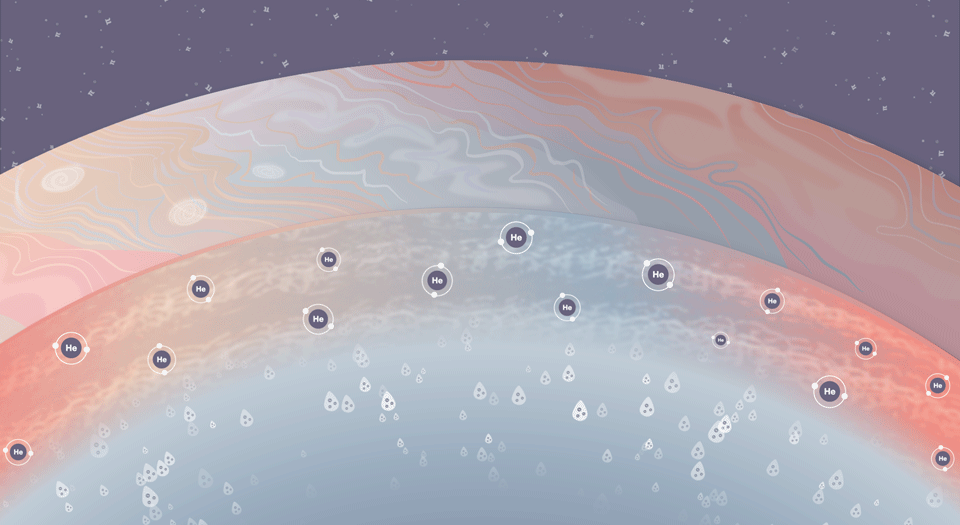Problem Set
Helium Heist: A 'Pi in the Sky' Math Challenge
Overview
The "Pi in the Sky" math challenge gives students a chance to take part in recent discoveries and upcoming celestial events, all while using math and pi just like NASA scientists and engineers. In this problem from the set, students use the mathematical constant pi to calculate how much helium is being rained out of Jupiter's cloud tops.
Materials
Background
Jupiter is our solar system’s largest planet. Shrouded in clouds, the planet’s interior holds clues to the formation of our solar system. In 1995, NASA’s Galileo spacecraft dropped a probe into Jupiter’s atmosphere. The probe detected unusually low levels of helium in the upper atmosphere.
It has been hypothesized that the helium was depleted out of the upper atmosphere and transported deeper inside the planet. The extreme pressure inside Jupiter condenses helium into droplets that form inside a liquid metallic hydrogen layer below. Because the helium is denser than the surrounding hydrogen, the helium droplets fall like rain through the liquid metallic hydrogen.
In 2016, the Juno spacecraft, which is designed to study Jupiter’s interior, entered orbit around the planet. Juno’s initial gravity measurements have helped scientists better understand the inner layers of Jupiter and how they interact, giving them a clearer window into what goes on inside the planet.
Procedures
- With a radius of 70,000 km, Jupiter is our solar system’s most massive planet. About 10% of the volume from Jupiter’s cloud tops to 20,000 km below is helium, with the rest being mostly hydrogen. Circulation in this molecular hydrogen layer causes some of that helium to be depleted as it moves into the liquid metallic hydrogen layer beneath. The tremendous pressure inside Jupiter condenses helium into droplets that fall like rain through the less dense liquid metallic hydrogen. The presence of helium rain inside Jupiter helps explain why scientists observe less helium in the clouds than expected. If 10% of the helium volume in Jupiter’s molecular hydrogen layer has been rained out since the planet formed, what is the volume in cubic km that has rained out? Given that Earth’s radius is 6,371 km, about how many Earth-size spheres of helium have been rained out?

Assessment

Extensions
Pi Day Challenges- Pi in the Sky
- Pi in the Sky 2
- Pi in the Sky 3
- Pi in the Sky 4
- Pi in the Sky 5
- Pi in the Sky Challenge (slideshow for students)
Multimedia
Features
Websites








